Stefano Rossignoli, dal 22 aprile 2023
A livello divulgativo rispolvero qualche concetto geologico che spero possa essere utile ai frequentatori di vari ambienti outdoor.
Sarà più che altro una raccolta di immagini, appunti, links che facciano da filo conduttore all’ex divulgatore scientifico non aggiornato e fuori allenamento che è in me!
Ovviamente è solo una traccia e tanti concetti che qui mancano li spiegherò a voce durante la lezione che mi è stata richiesta dagli amici del CAI Edelweiss di Milano e sfrutterò le immagini, i gesti, le domande che mi verranno poste… Una parte importante poi verrà trattata durante l’uscita in ambiente.
Le parti scritte a parole servono giusto per chi voglia ripassare dopo aver seguito la lezione o per chi voglia curiosare un po’, ma giusto quello. Durante la presentazione utilizzerò solamente immagini e video. Molte immagini sono tratte dal libro di Alfonso Bosellini “Storia geologica d’Italia”.
Il tempo
Cominciamo dalla CLESSIDRA naturale in fotografia. Indica il primo concetto, ossia il passare del tempo che governa lento e inesorabile i processi geologici e tutti i cambiamenti in atto ogni istante sul pianeta Terra.
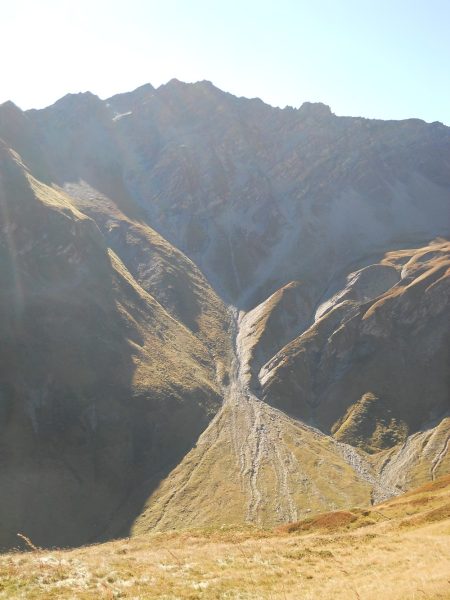
Lo studio della Terra non può esulare dalla conoscenza del tempo. La terra ha iniziato la sua storia con la sua massa più o meno attuale circa 4540Ma (4,54 miliardi di anni fa).
I movimenti della Terra nello spazio
La terra cambia anche la sua posizione nello spazio e lo fa molto velocemente:
V equatoriale: 1667 Km/h
V a 45° di latitudine: 1179 Km/h
V intorno al sole media: 107240,4 Km/h
L’orbita terrestre è leggermente eccentrica, l’asse terrestre ogni 25800 anni circa compie una rotazione completa (precessione degli equinozi) senza variare di troppo la sua inclinazione ma solo con piccole variazioni cicliche (nutazione) e ne consegue un’inversione delle stagioni ogni 12000 anni circa…
…ma anche il sole si muove e cambia posizione rispetto alle altre stelle, galassie, ecc e noi lo seguiamo. Non so a che velocità, ma deve essere mooolto alta e se volete fate pure le vostre ricerche!
Da alcuni movimenti intorno al sole dipendono certe tendenze climatiche terrestri che influiscono sui fenomeni erosivi, e ne faremo ancora cenno più tardi…
La Terra quindi cambia continuamente posizione nello spazio, temperatura, umidità e cambia sulla sua superficie dove noi viviamo.
Ma chi è il responsabile di questi cambiamenti superficiali?
Il “motore” della Terra
Il responsabile è l’energia interna della Terra la quale deriva in buona parte dalle reazioni di decadimento radioattivo di elementi come Uranio, Torio e Potassio, contenuti nella crosta terrestre e nel mantello.
Vediamo nelle prossime immagini tratte da “Storia geologica d’Italia” di Alfonso Bosellini:
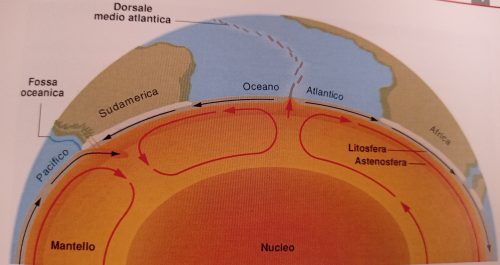
Nel mantello il calore prodotto si distribuisce per convezione, così come succede per l’acqua in ebollizione contenuta in una pentola!
Sono questi moti convettivi i responsabili della maggior parte dei movimenti orizzontali della crosta terrestre.
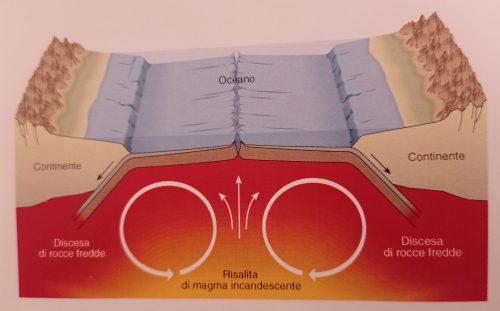
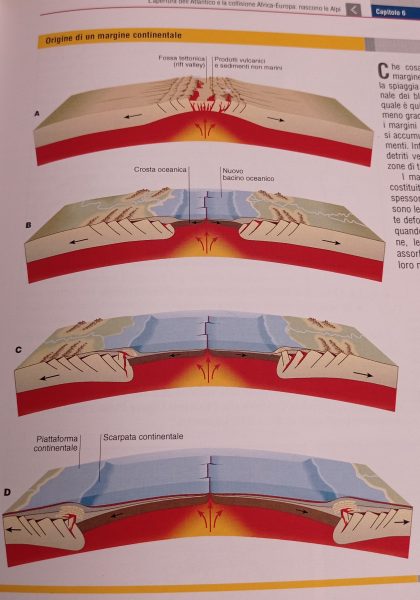
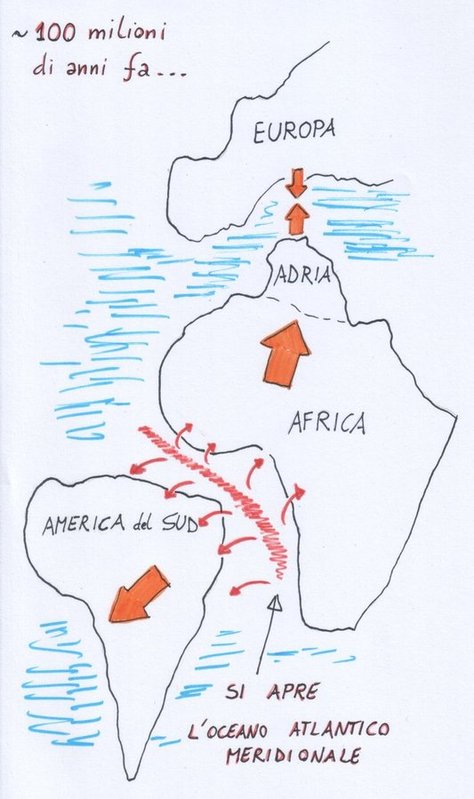
Vediamo poi in questo bel filmato (che qualche anno fa era pionieristico!) una simulazione di uno scontro tra una placca oceanica ed una continentale con conseguente subduzione della crosta oceanica, poi la successiva collisione tra placche continentali con la formazione di un rilievo come potrebbe essere stato per la catena alpina (al minuto 1′ : 25″ inizia la convergenza):
Il tutto è riassunto in tre passaggi nell’immagine successiva (sempre da Bosellini):
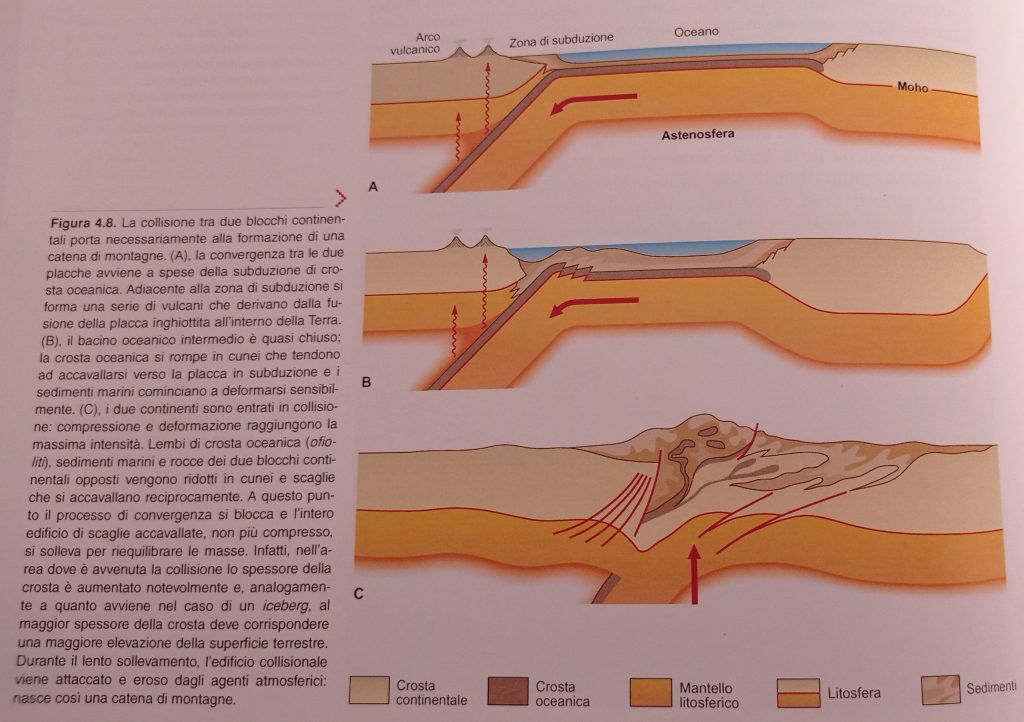
Come specificato manca l’erosione ed ogni processo gravitativo a modellare di continuo il tutto, ma aggiungo anche la dissoluzione delle rocce carbonatiche e non meno importante l’isostasia e le eruzioni di vulcani orogenici e anorogenici, gli impatti meteorici, ecc.
In questo video successivo una rappresentazione schematica della formazione di una rete idrica a modellare il territorio:
Molte altre tipologie di movimenti crostali sono state modellizzate. Ad esempio:
https://www.youtube.com/watch?v=bI5r4cs74w8&t=171s
https://www.youtube.com/watch?v=LWAQOoTT_uk
https://www.youtube.com/watch?v=QfY7KSnNYlI e molti altri…
Come e dove si formano le rocce
La loro origine e le loro proprietà.
In questa immagine vediamo le principali zone di formazione delle rocce: Per le rocce ignee o magmatiche abbiamo quelle effusive del vulcanismo intraplacca, quelle effusive della zona di subduzione e quelle intrusive (o plutoniche).
Vediamo le zone di formazione delle rocce sedimentarie di origine marina e sedimentarie di origine continentale.
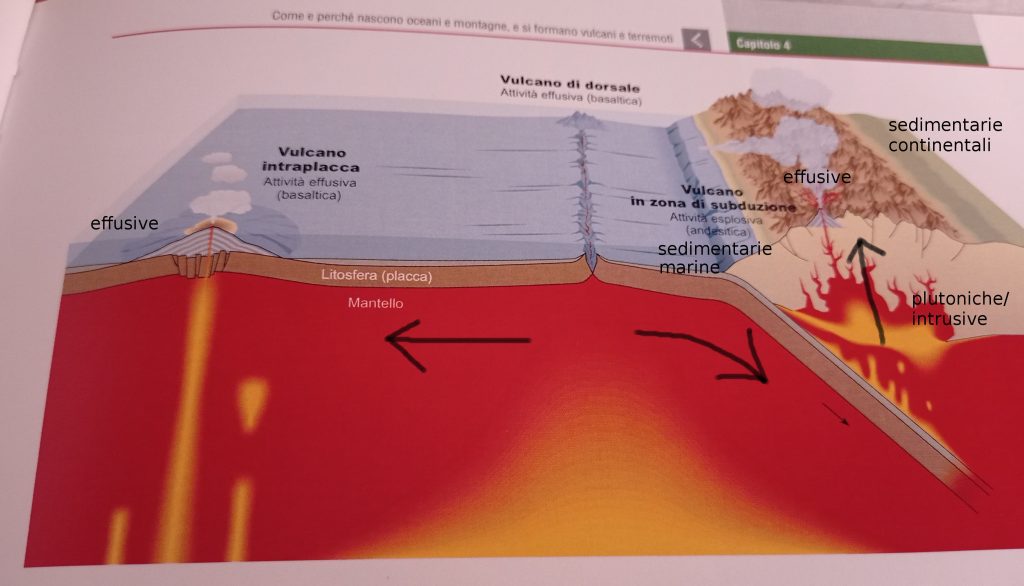
E le province magmatiche italiane dove si formano attualmente rocce ignee:
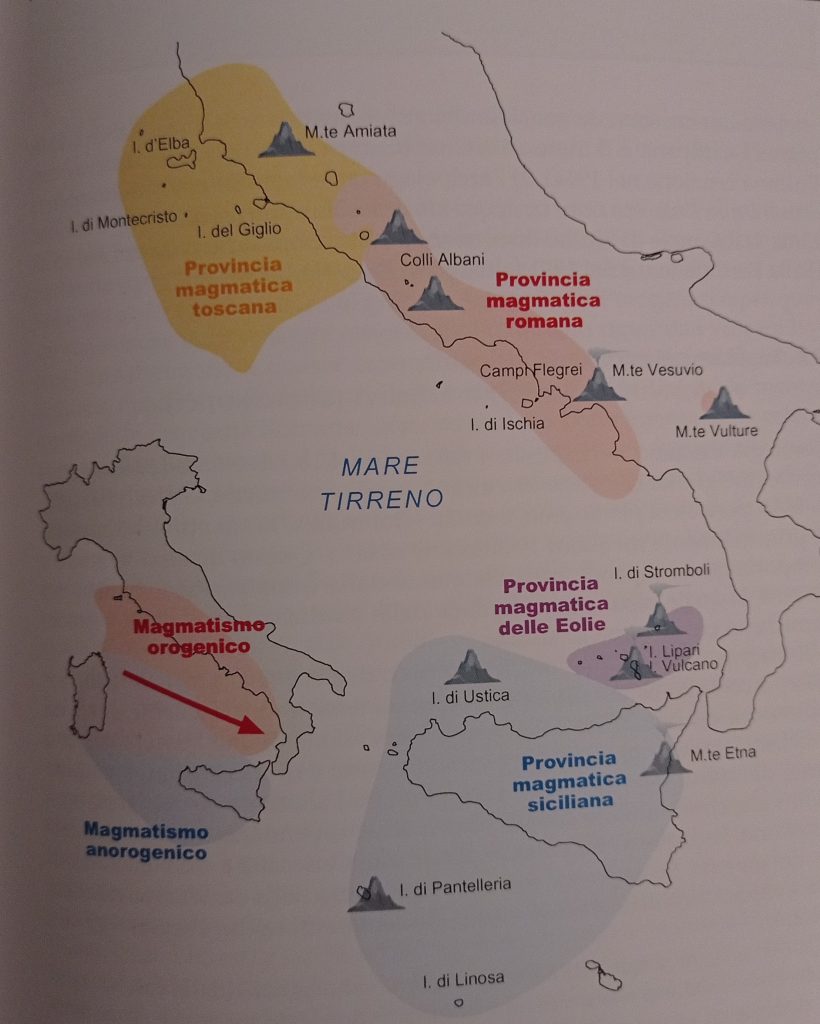
Le rocce metamorfiche caratterizzate da una trasformazione dovuta a pressione e temperatura si formano dove sia presente alta pressione e temperatura nelle zone di convergenza o nelle zone limitrofe alle intrusioni magmatiche che cedono calore alle preesistenti rocce incassanti le quali tenderanno a trasformarsi.
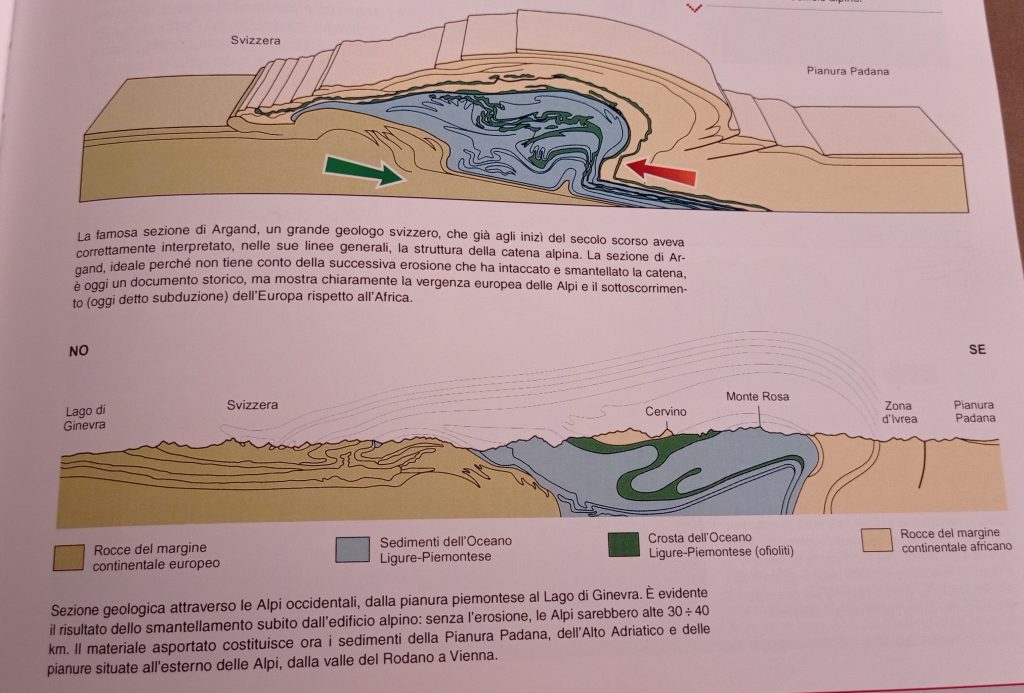
uno sguardo all’Italia e alla sua storia
Mari, montagne, pianure, fiumi, laghi e chi più ne ha più ne metta…
Galleria lez. geo. Edelweiss-003-tettonica
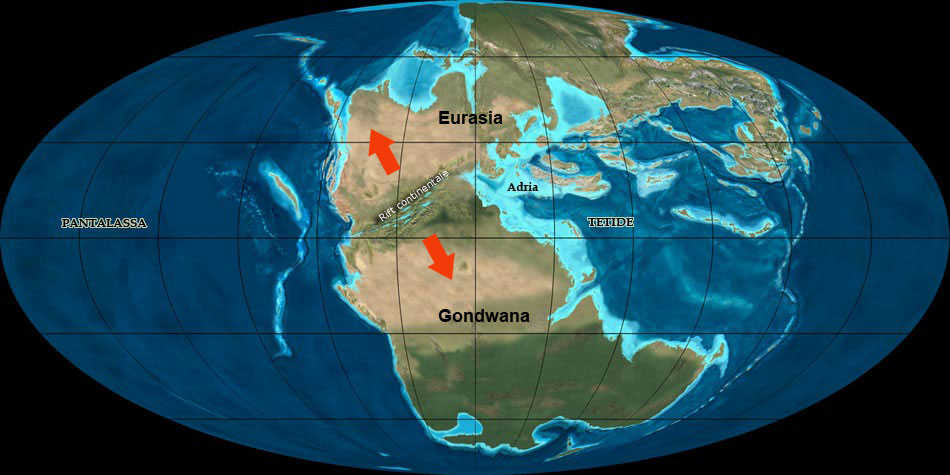
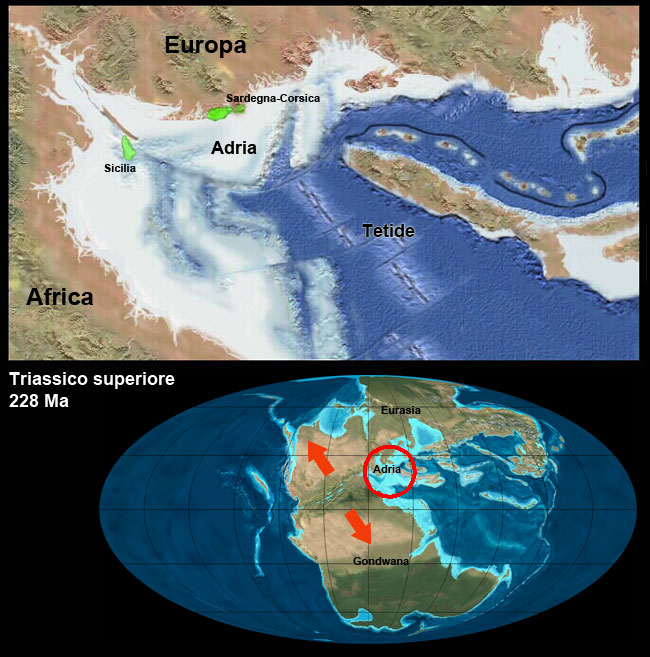
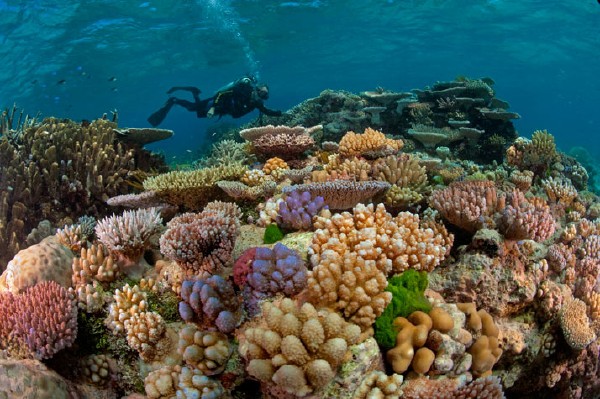
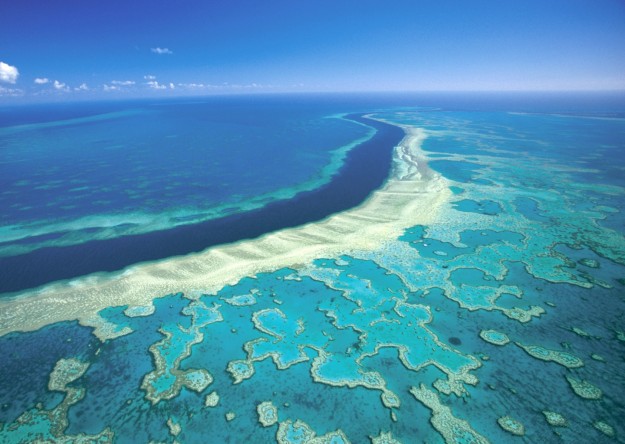
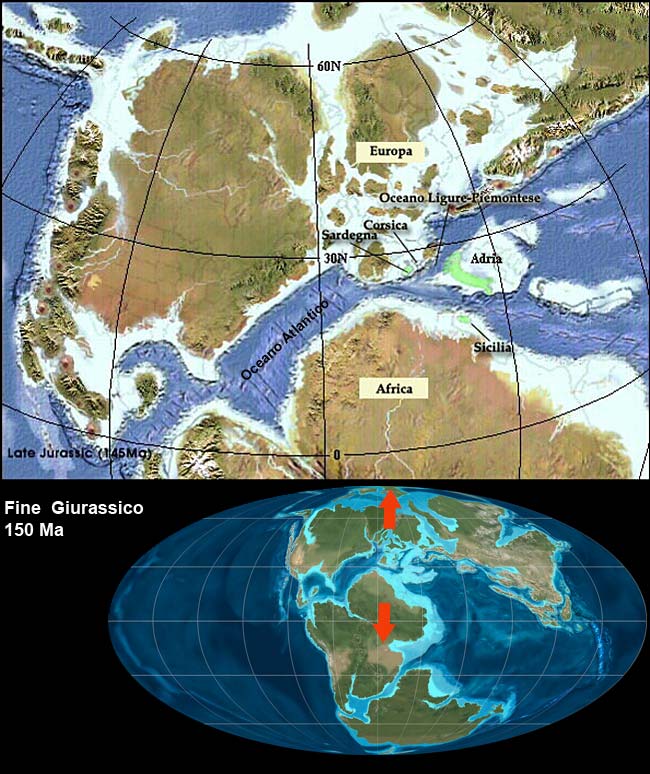
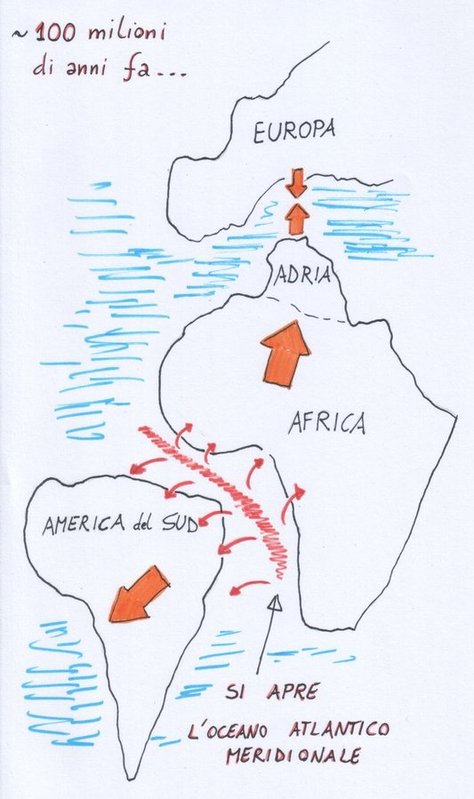
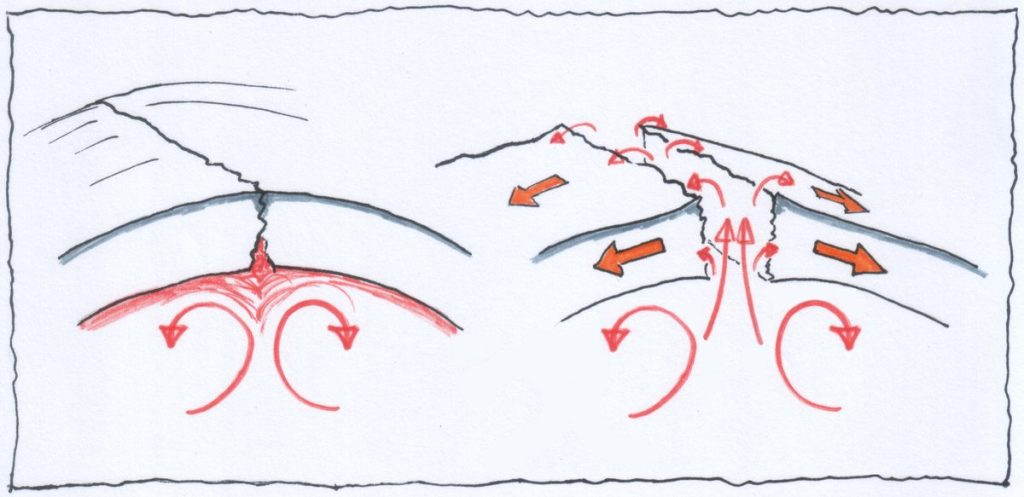
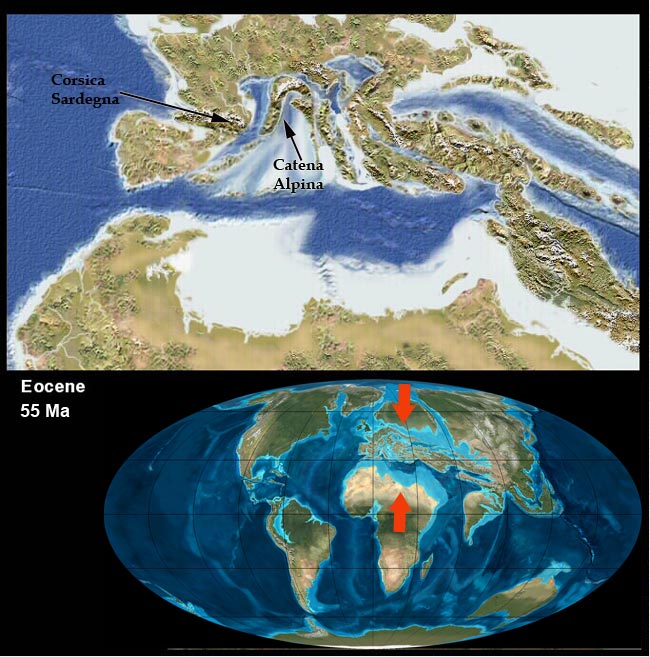

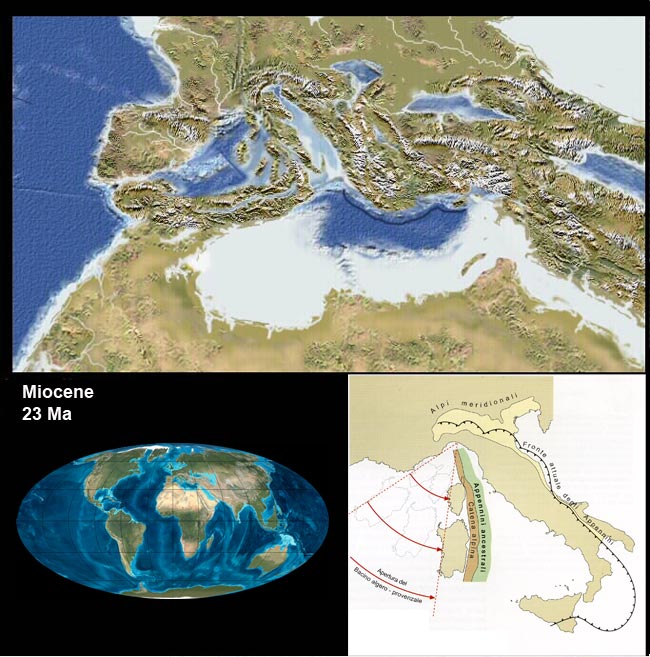
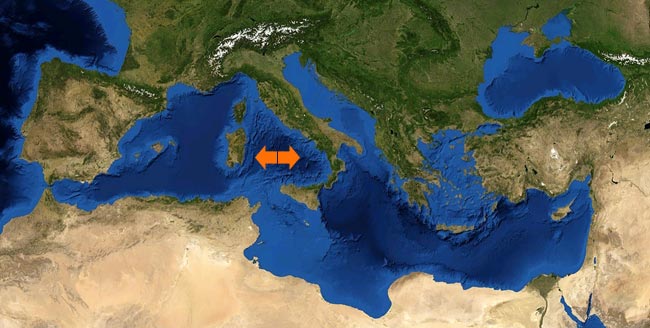
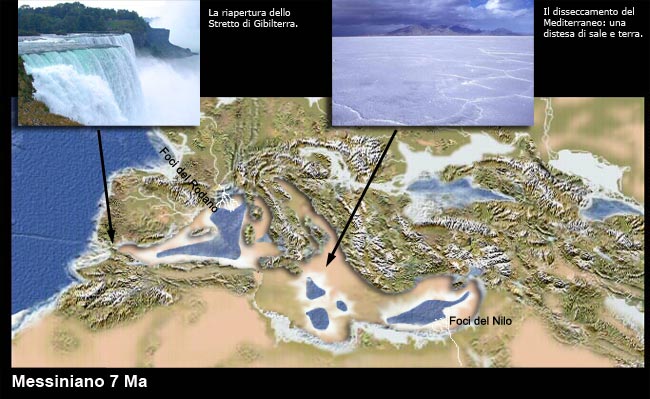
La litogenesi organogena
Gli organismi formano le rocce carbonatiche (…e silicee)
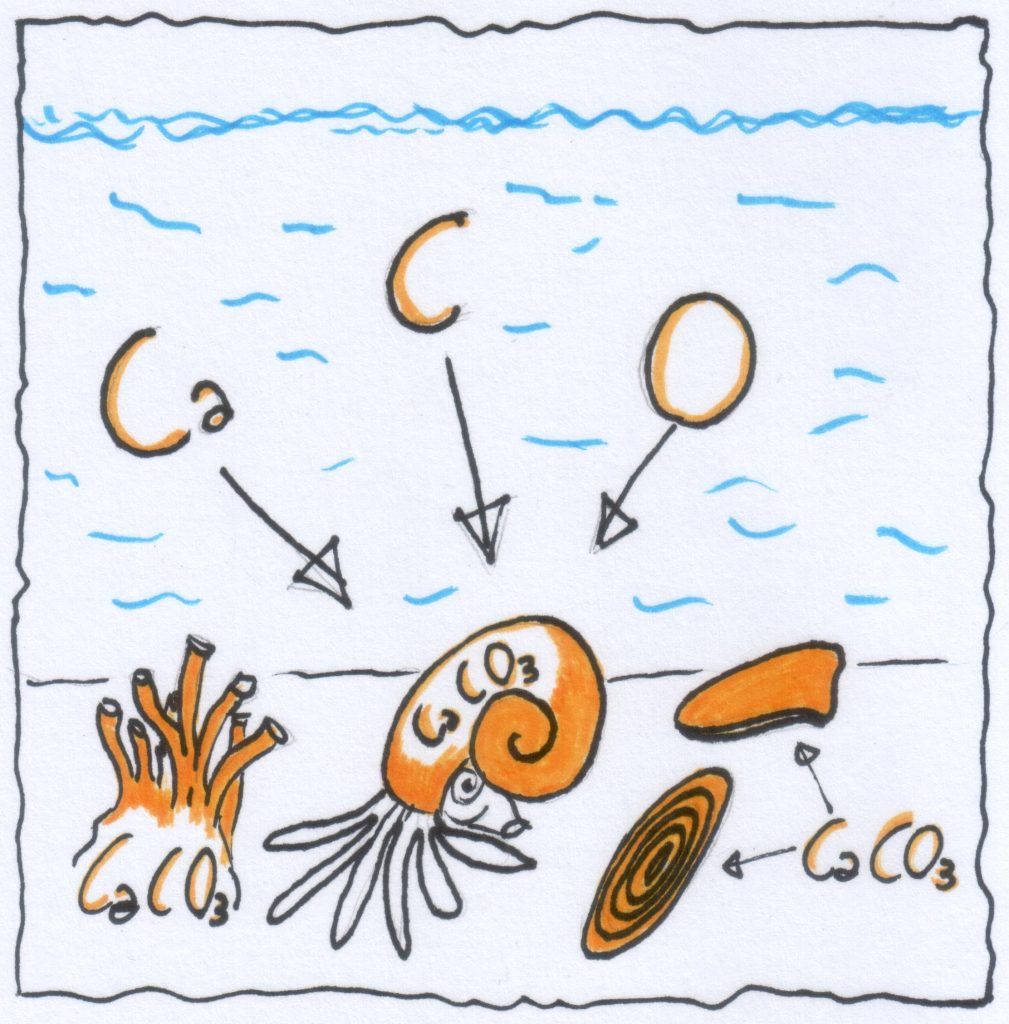
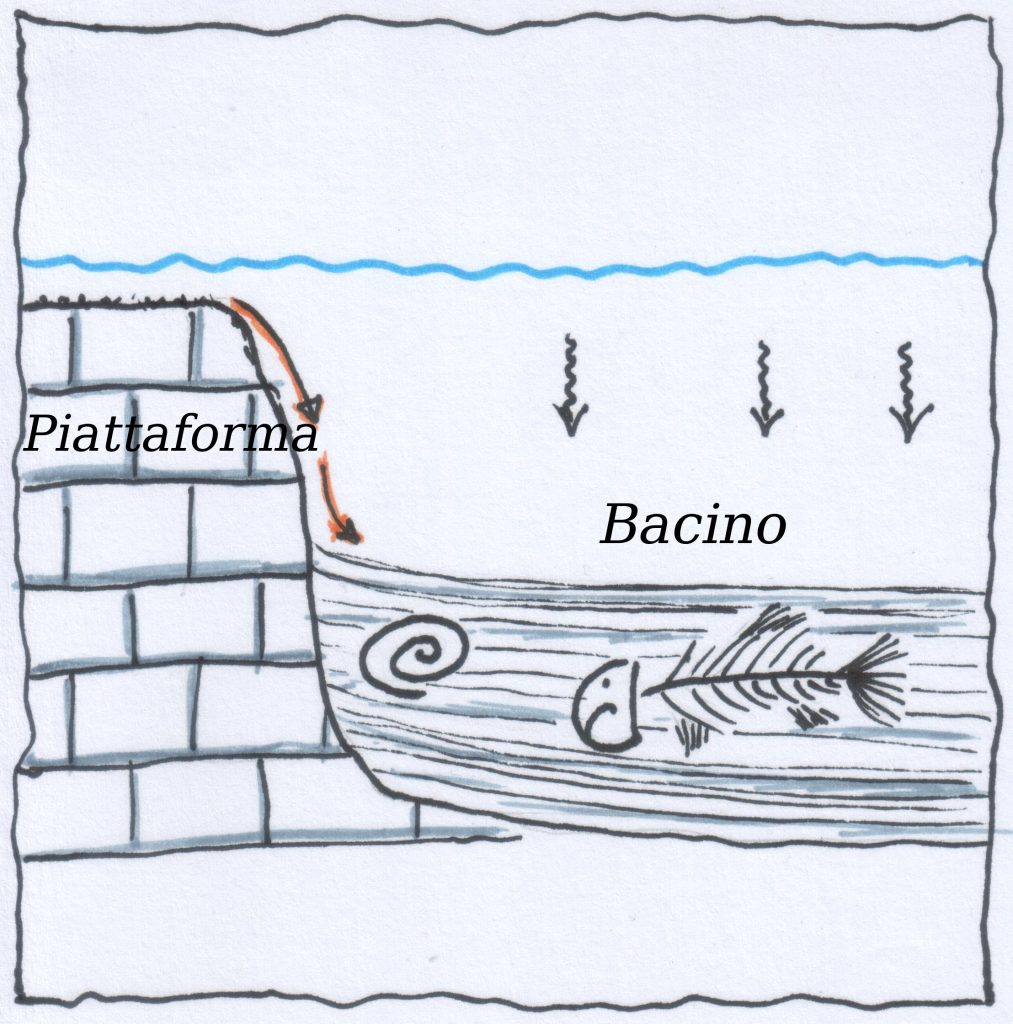
Al di sotto di una certa profondità (ccd) la calcite non riesce più depositarsi salvo eccezioni, ma viene interamente disciolta. Anche per l’aragonite esiste la acd meno profonda. La silice invece potrà depositarsi anche oltre la ccd.
La concentrazione di CO2 è direttamente responsabile della profondità della ccd. Se aumenta la [CO2], diminuisce la profondità della ccd!
Le evaporiti
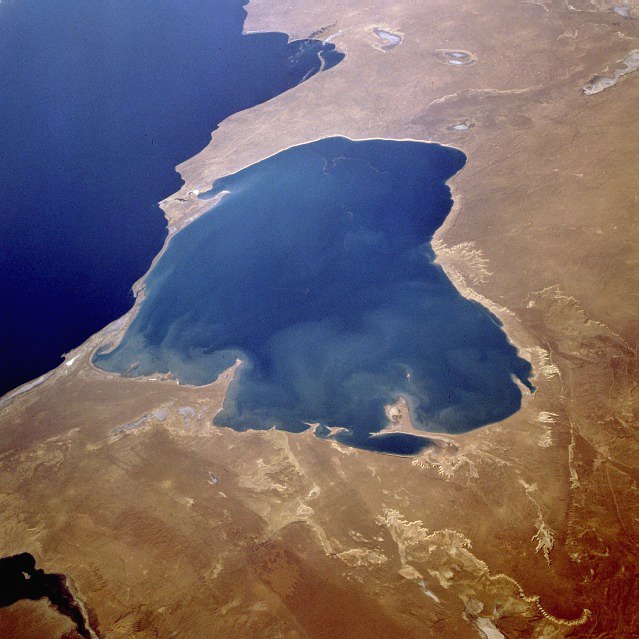
Un bacino chiuso sulle coste del Mar Caspio
Molto in generale, in un bacino chiuso o semichiuso nel quale l’evaporazione superi l’apporto di acqua si depositeranno gesso, cloruri, carbonati…
Sono molti i casi di depositi evaporitici (vedi link ad Alex Strekeisen).
La morfogenesi
Nuova crosta terrestre viene formata e poi riassorbita per subduzione, nuove catene montuose si formano, gli oceani si aprono e si chiudono.
Mentre questi processi agiscono, la forma del rilievo viene modificata continuamente da numerosi agenti. Vediamone alcuni:
I processi gravitativi per primi (quando qualcosa viene sollevata, se manca l’equilibrio tende a sempre a cadere!).
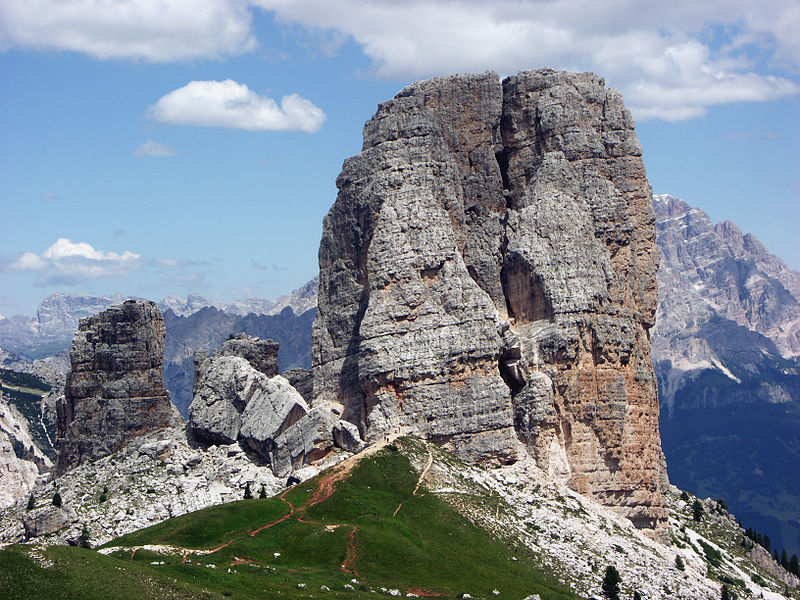
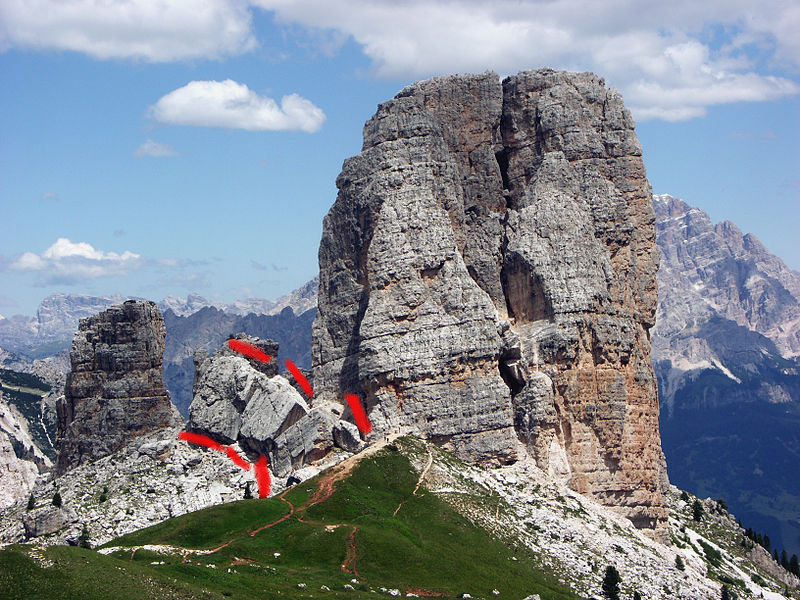
Immagine da Wikipedia
Esistono molti tipi di frane. Qualche esempio:
Mentre nei casi precedenti sono le onde a scavare e destabilizzare un terreno che probabilmente si sta sollevando per movimenti crostali, nel caso successivo è il torrente a scavare e ad aver scavato provocando il crollo del terreno incoerente e probabilmente anche zuppo di acqua.
Mari, fiumi e acque superficiali sono agenti erosivi.
Anche i ghiacciai che sembrano fermi sono agenti di modellamento del rilievo:
Le rocce possono anche sciogliersi.
Il fenomeno del Carsismo agisce sia in superficie (karren, campi solcati, doline), sia nel sottosuolo.
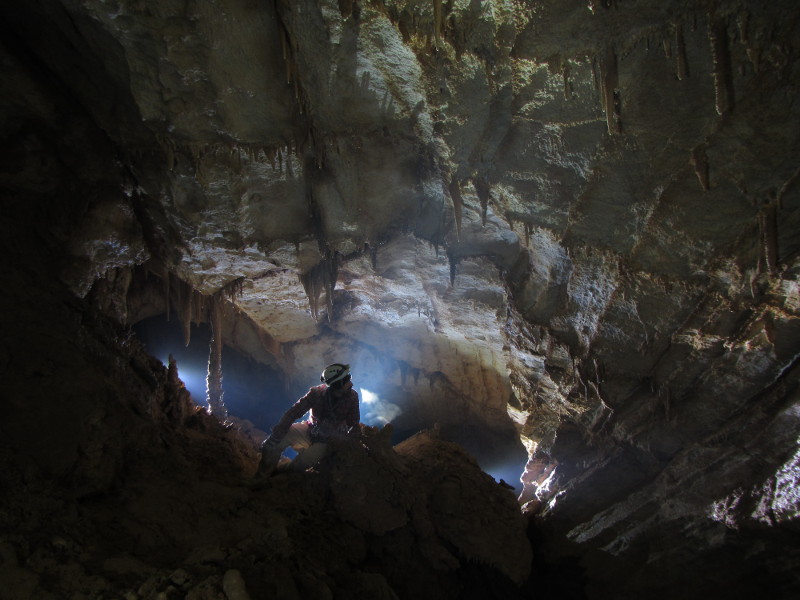
Tutto cambia in continuazione, che lo vediamo o no, inesorabilmente, sempre!
Grazie!
Ste!